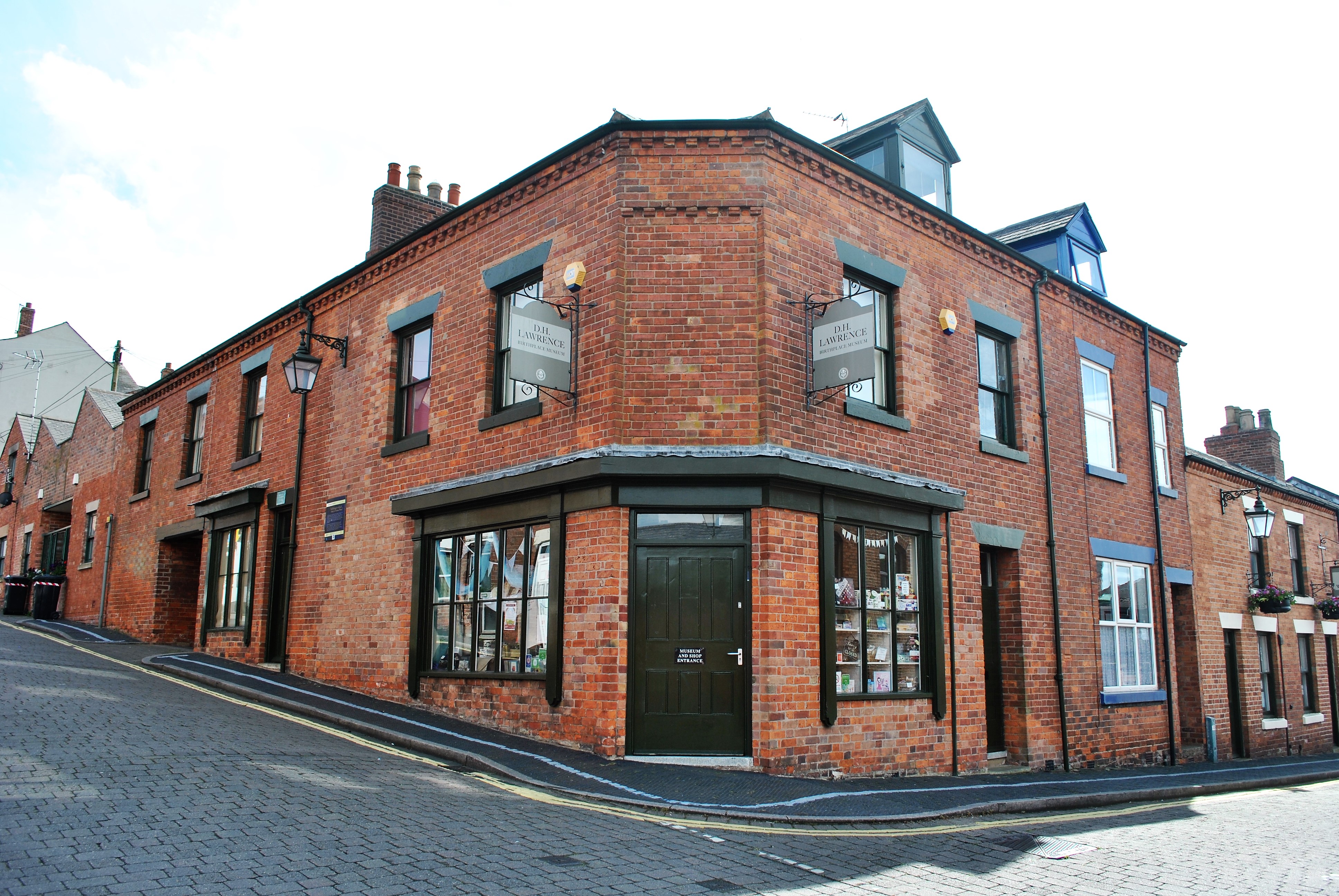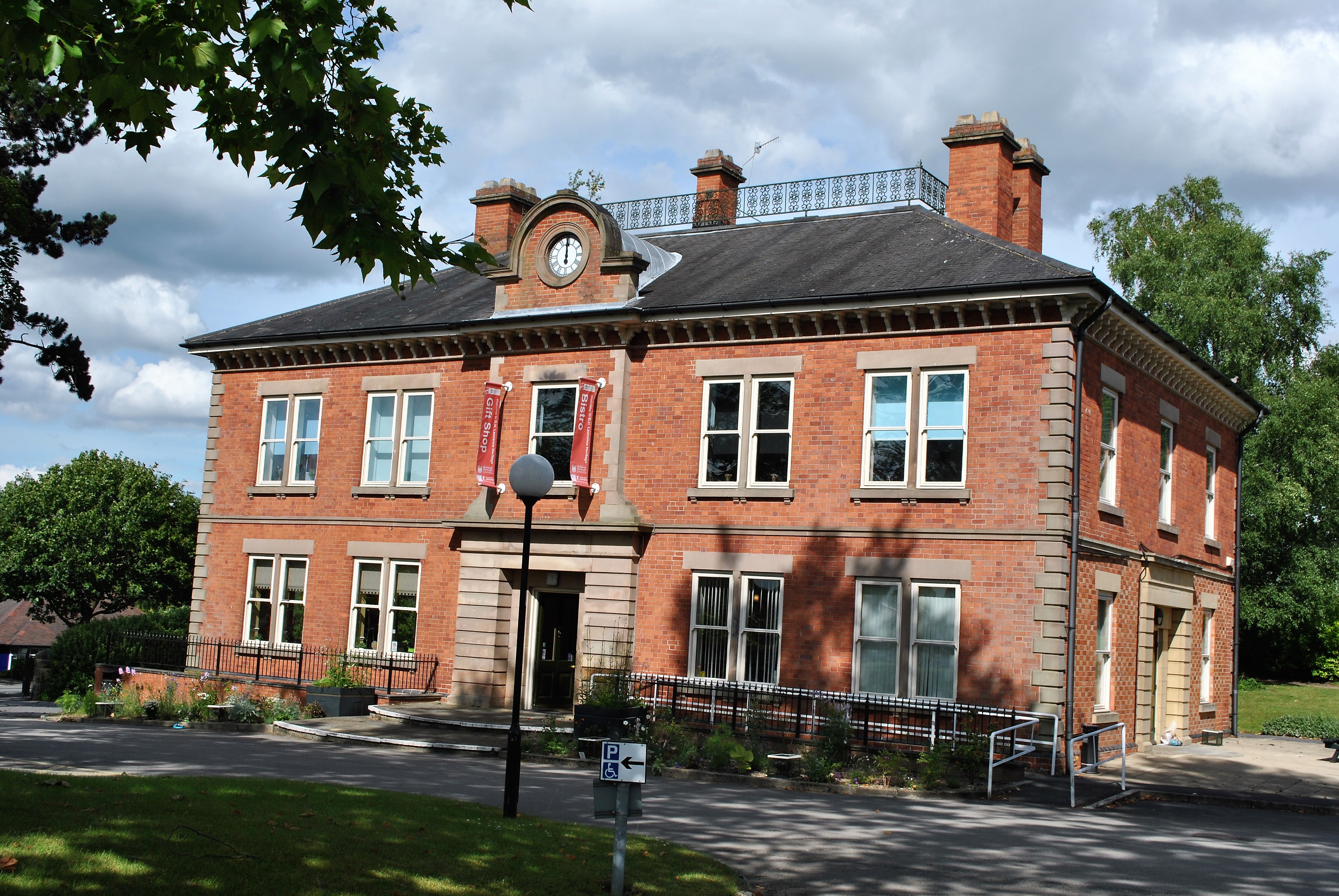Wife Frieda Weekley von Richthofen
Queer Places:
D. H. Lawrence Birthplace Museum, 8a Victoria St, Eastwood, Nottingham NG16 3AW, Regno Unito
Durban House Heritage Centre, Mansfield Rd, Eastwood, Nottingham NG16 3DZ, Regno Unito
Nottingham High School, Waverley Mount, Nottingham NG7 4ED, Regno Unito
University of Nottingham, Nottingham NG7 2RD, Regno Unito
Byron Villas, Hampstead, London NW3 1AR, Regno Unito
32 Well Walk, Hampstead, London NW3 1BX, Regno Unito
30 Willoughby Rd, Hampstead, London NW3 1RU, Regno Unito
Rossetti Garden Mansions, The Lodge Cheyne Court, Chelsea, London SW3 5TP, Regno Unito
9 Selwood Terrace, Kensington, London SW7 3AT, Regno Unito
The Tinners Arms, Zennor, Saint Ives TR26 3BY, Regno Unito
Higher Tregerthen, Zennor, Saint Ives TR26 3BP, Regno Unito
D. H. Lawrence House, Vence, Francia
Fontana Vecchia, Via David Herbert Lawrence, 98039 Taormina ME, Italia
Quinta Quetzacoatl, Zaragoza 307, Chapala Centro, 45900 Chapala, Jal., Messico
Westminster Abbey, 20 Deans Yd, Westminster, London SW1P 3PA, Regno Unito
D. H. Lawrence Ranch, Lawrence Ranch Rd, New Mexico, Stati Uniti
 David Herbert Lawrence (11 September 1885 – 2 March 1930) was an
English
novelist, poet,
playwright, essayist,
literary critic and painter. His collected works represent, among other
things, an extended reflection upon the dehumanising effects of modernity and
industrialisation. Some of the issues Lawrence explores are sexuality,
emotional health, vitality, spontaneity, and instinct.
David Herbert Lawrence (11 September 1885 – 2 March 1930) was an
English
novelist, poet,
playwright, essayist,
literary critic and painter. His collected works represent, among other
things, an extended reflection upon the dehumanising effects of modernity and
industrialisation. Some of the issues Lawrence explores are sexuality,
emotional health, vitality, spontaneity, and instinct.
Lawrence's opinions earned him many enemies and he endured official
persecution, censorship, and misrepresentation of his creative work throughout
the second half of his life, much of which he spent in a voluntary exile he
called his "savage pilgrimage".[1]
At the time of his death, his public reputation was that of a pornographer who
had wasted his considerable talents.
E.
M. Forster, in an obituary notice, challenged this widely held view,
describing him as "the greatest imaginative novelist of our generation."[2]
Later,
Cambridge critic
F.
R. Leavis championed both his artistic integrity and his moral
seriousness, placing much of Lawrence's fiction within the
canonical "great tradition" of the English novel.
While writing
Women in Love in Cornwall during 1916–17, Lawrence developed a strong
and possibly romantic relationship with a Cornish farmer named William Henry
Hocking.[9]
Although it is not clear if their relationship was sexual, Frieda said she
believed it was. Lawrence's fascination with the theme of homosexuality, which
is overtly manifested in
Women in Love, could be related to his own sexual orientation.[10]
In a letter written during 1913, he writes, "I should like to know why nearly
every man that approaches greatness tends to homosexuality, whether he admits
it or not ..."[11]
He is also quoted as saying, "I believe the nearest I've come to perfect love
was with a young coal-miner when I was about 16."[12]
However, given his enduring and robust relationship with Frieda it is likely
that he was primarily "bi-curious" in the terminology of today, and whether he
actually ever had homosexual relations remains an open question.[13]

D.H. Lawrence Birthplace

Heritage Center

Nottingham High School

Westminster Abbey, London
In late February 1922 the Lawrences left Europe behind with the intention
of migrating to the United States. They sailed in an easterly direction, first
to Ceylon and then on to Australia. A short residence in
Darlington, Western Australia, which included an encounter with local
writer
Mollie Skinner, was followed by a brief stop in the small coastal town of
Thirroul, New South Wales, during which Lawrence completed
Kangaroo, a novel about local fringe politics that also revealed a
lot about his wartime experiences in Cornwall.
The Lawrences finally arrived in the United States in September 1922.
Lawrence had several times discussed the idea of setting up a
utopian community with several of his friends, having written to his old
socialist friend in Eastwood, Willie Hopkin, in 1915.
It was with this in mind that they made for the "bohemian" town of
Taos, New Mexico, where
Mabel Dodge Luhan, a prominent socialite, lived. Here they eventually
acquired the 160-acre (0.65 km2) Kiowa Ranch, now called the
D. H. Lawrence Ranch, in 1924 from Dodge Luhan in exchange for the
manuscript of Sons and Lovers.[19]
He stayed in New Mexico for two years, with extended visits to
Lake
Chapala and
Oaxaca in Mexico. While Lawrence was in New Mexico, he was visited by
Aldous Huxley.
Editor and book designer Merle Armitage wrote a book about D. H. Lawrence
in New Mexico. Taos Quartet in Three Movements was originally to appear in
Flair Magazine, but the magazine folded before its publication. This short
work describes the tumultuous relationship of D. H. Lawrence, his wife Frieda,
artist Dorothy Brett and Mabel Dodge Sterne. Armitage took it upon himself to
print 16 hardcover copies of this work for his friends. Richard Pousette-Dart
executed the drawings for Taos Quartet, published in 1950.[20]
While in the US, Lawrence rewrote and published
Studies in Classic American Literature, a set of critical essays begun
in 1917, and later described by
Edmund Wilson as "one of the few first-rate books that have ever been
written on the subject". These interpretations, with their insights into
symbolism,
New England Transcendentalism and the puritan sensibility, were a
significant factor in the revival of the reputation of
Herman Melville during the early 1920s. In addition, Lawrence completed a
number of new fictional works, including
The Boy in the Bush,
The Plumed Serpent,
St Mawr,
The Woman who Rode Away,
The Princess and assorted short stories. He also found time to
produce some more travel writing, such as the collection of linked excursions
that became
Mornings in Mexico.
A brief voyage to England at the end of 1923 was a failure and he soon
returned to Taos, convinced that his life as an author now lay in the United
States. However, in March 1925 he suffered a near fatal attack of
malaria
and
tuberculosis while on a third visit to
Mexico.
Although he eventually recovered, the diagnosis of his condition obliged him
to return once again to Europe. He was dangerously ill and the poor health
limited his ability to travel for the remainder of his life. The Lawrences
made their home in a villa in Northern Italy, living near
Florence
while he wrote
The Virgin and the Gipsy and the various versions of
Lady Chatterley's Lover (1928). The latter book, his last major novel,
was initially published in private editions in Florence and Paris and
reinforced his notoriety. A story set once more in Nottinghamshire about a
cross-class relationship between a Lady and her gamekeeper, it broke new
ground in describing their sexual relationship in explicit yet literary
language. His intention in writing the novel was to challenge the British
establishment’s taboos around sex, to enable men and women "…to think sex,
fully, completely, honestly, and cleanly."[21]
Lawrence responded robustly to those who claimed to be offended, penning a
large number of satirical poems, published under the title of "Pansies" and
"Nettles", as well as a tract on Pornography and Obscenity.
The return to Italy allowed Lawrence to renew old friendships; during these
years he was particularly close to
Aldous Huxley, who was to edit the first collection of Lawrence's letters
after his death, along with a memoir. With artist
Earl Brewster, Lawrence visited a number of local archaeological sites in
April 1927. The resulting essays describing these visits to old tombs were
written up and collected together as
Sketches of Etruscan Places, a book that contrasts the lively past
with
Benito Mussolini's fascism. Lawrence continued to produce fiction,
including short stories and
The Escaped Cock (also published as The Man Who Died), an
unorthodox reworking of the story of Jesus Christ's
Resurrection. During these final years Lawrence renewed a serious interest
in oil painting. Official harassment persisted and an exhibition of some of
these pictures at the Warren Gallery in London was raided by the police in mid
1929 and a number of works were confiscated.
Lawrence continued to write despite his failing health. In his last months
he wrote numerous poems, reviews and essays, as well as a robust defence of
his last novel against those who sought to suppress it. His last significant
work was a reflection on the
Book of Revelation, Apocalypse. After being discharged from a
sanatorium, he died on 2 March 1930 at the Villa Robermond in
Vence, France,
from complications of tuberculosis. Frieda Weekley commissioned an elaborate
headstone for his grave bearing a mosaic of his adopted emblem of the
phoenix.[22]
After Lawrence's death, Frieda lived with
Angelo Ravagli on the ranch in
Taos and eventually married him in 1950. In 1935 Ravagli arranged, on
Frieda's behalf, to have Lawrence’s body exhumed and cremated and his ashes
brought back to the ranch to be interred there in a small chapel amid the
mountains of
New
Mexico.[23]
My published books:


BACK TO HOME PAGE

- https://en.wikipedia.org/wiki/D._H._Lawrence
- Homosexuals in History, A Study of Ambivalence in Society, Literature
and the Arts, by A.L. Rowse, 1977
 David Herbert Lawrence (11 September 1885 – 2 March 1930) was an
English
novelist, poet,
playwright, essayist,
literary critic and painter. His collected works represent, among other
things, an extended reflection upon the dehumanising effects of modernity and
industrialisation. Some of the issues Lawrence explores are sexuality,
emotional health, vitality, spontaneity, and instinct.
David Herbert Lawrence (11 September 1885 – 2 March 1930) was an
English
novelist, poet,
playwright, essayist,
literary critic and painter. His collected works represent, among other
things, an extended reflection upon the dehumanising effects of modernity and
industrialisation. Some of the issues Lawrence explores are sexuality,
emotional health, vitality, spontaneity, and instinct.




